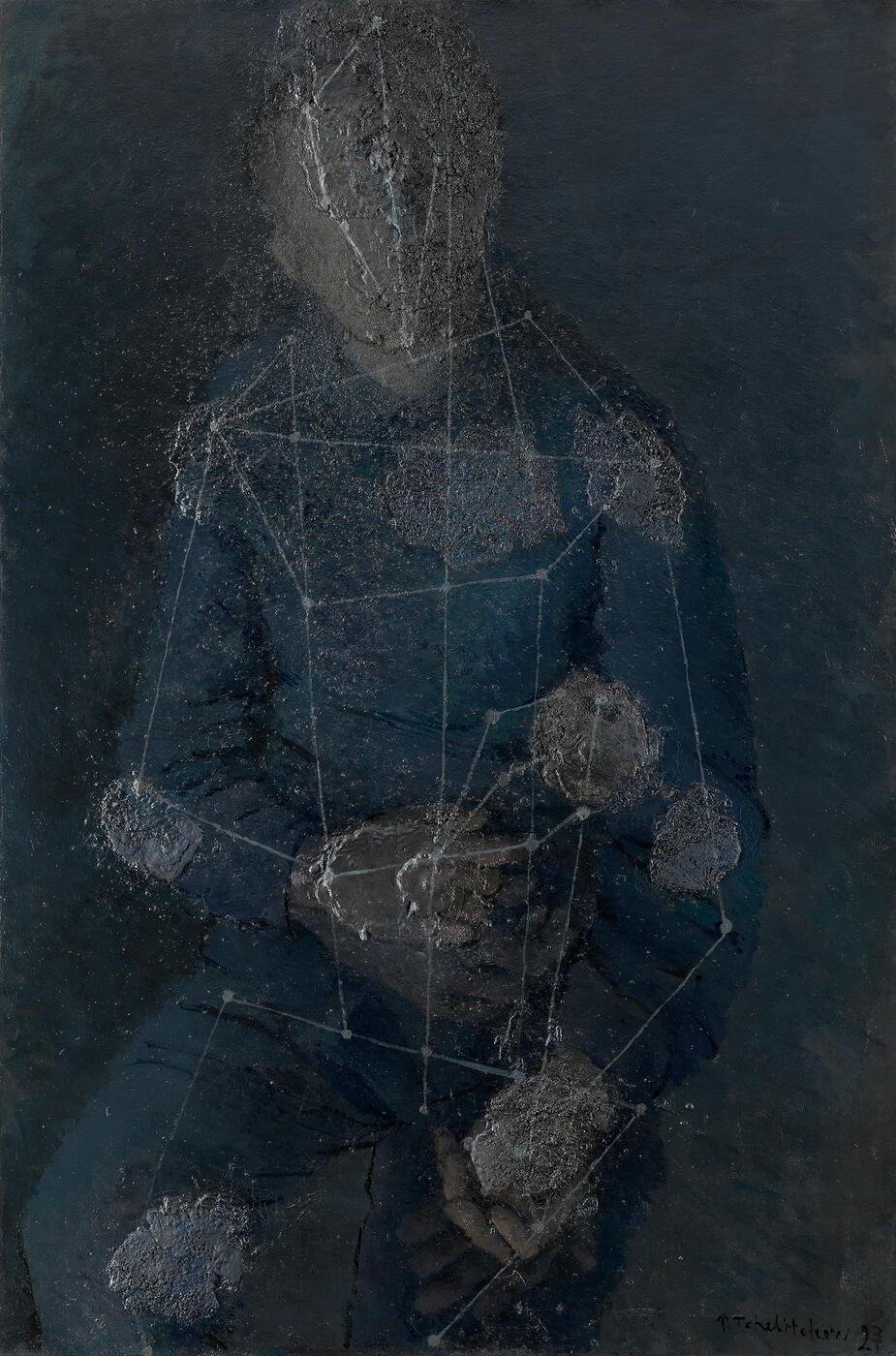26 November 2014 Russian Art Auctions
26 November 2014

136. TCHELITCHEW, PAVEL (1898-1957)
Abstract Portrait, signed and dated 1927.
Mixed media on canvas, 129.5 by 87 cm.
250,000-300,000 GBP
Provenance: Collection of Galerie Henriette Gomès, after 1949 (label on the stretcher).
Acquired by the previous owner in the 1980s.
Exhibited: Possibly, Paris–Moscou 1900–1930, Centre Georges Pompidou, Paris, 1979 (label on the reverse).
Literature: A. Kuznetsov, Pavel Tchelitchew. Metamorphoses, Stuttgart, Arnoldsche, 2012, p. 94, illustrated; p. 287, listed.
Related literature: For another version of the present lot, see exhibition catalogue, Hommage à Tchelitchew, Paris, Galerie Lucie Weill, 1966, No. 5, illustrated and listed.
While continuing to work in monochrome, in 1927 Pavel Tchelitchew began to paint with relief texture. He was not the first artist to create relief from such unusual materials as sand and coffee grounds, but Gertrude Stein confided to him the treasured secret of Juan Gris, who mixed his own paste with quick-hardening industrial paint. Technical novelty does not necessarily entail any special signification – it may be applied automatically and without evident progress – but the technique aroused Tchelitchew’s special interest and he used it to achieve a unique aesthetic leitmotif.
Strengthening of the emotional aspects of his anthropomorphic still lifes and depictions of the human body was immeasurably more important to Tchelitchew than mere auxiliary technical tricks. It is also quite possible that, after his 1927 trip to North Africa, the artist, with his usual romanticism, associated his journey with the scorched wilderness of sand and the smell of coffee grounds. With their varying incrustations of relief, from light, barely noticeable insertions to massive layering, what is attractive in these works is not so much their originality as their taste, measure and ability to subordinate the technique to the work’s idea. Tchelitchew’s minor-tone monochromes might well have been in part an intuitive reaction against the “blue” and “pink” compositions of Picasso, but it is equally clear that Tchelitchew was an enthusiastic experimenter with the most complex colour relations. What captivated him in the use of monochrome was the potential for using a concealed, veiled pigment, like a penetration – wrapped in a shroud of ritual secrecy – into another, “reverse” essence of human flesh, faces, fruits and flowers, as they are hidden from bright light.
At the end of 1926 Tchelitchew created his keynote work, The Ship, where he first used ray-like connections of specific areas, marked by dots on the surface of the picture. The associations that arise with astronomers’ maps of the sky are not coincidental. Tchelitchew intentionally projects the microcosm of the objects that surround him onto the limitless space of the universe. His conviction of the boundlessness and depth of small objects forces us to approach his work in a different manner – philosophically.
Notes on symbols:
* Indicates 5% Import Duty Charge applies.
Ω Indicates 20% Import Duty Charge applies.
§ Indicates Artist's Resale Right applies.
† Indicates Standard VAT scheme applies, and the rate of 20% VAT will be charged on both hammer price and premium.